Students retell a story to reinforce sequencing.
- Subject:
- Elementary English Language Arts
- Material Type:
- Lesson
- Author:
- Utah Lesson Plans
- Date Added:
- 09/08/2021
Students retell a story to reinforce sequencing.
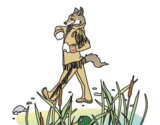
Coyote tales are part of the Paiute oral tradition used to teach proper behavior and values from an early age. If a story contains the Coyote character it is a winter time story that should only be told during the winter. The Coyote illustrates the mischievous nature in all of us. This Paiute Coyote Story booklet is part of the Native American Indian Literacy Project storybook series for the six main Utah Tribal Nations. The project was led by Shirlee A. Silversmith, American Indian education specialist for the Utah State Office of Education. There are five stories per Tribe, with a total of 30 booklets, plus an ABC book. The set of Indian Tribal stories may be utilized by elementary classroom teachers to (1) develop an understanding and appreciation of Native American culture and societal contributions (2) provide a genre of text for the application of reading strategies, and (3) facilitate the mastery of various Utah Core Content Curriculum objectives. The Native American Indian Literacy Project was made possible by funds from the Utah State Office of Education (USOE). It is a joint effort of the USOE and San Juan School District Media Center.
The original set has 30 booklets, measuring 5.5” x 8.5” each, and illustrated by tribal members. The booklets were formatted to be printed and assembled. This version of the book has been updated to accommodate using a projector or smart board with pages appearing in order.
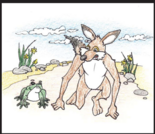
According to Goshute tradition, Coyote tales should only be told during the winter time. Traditional Goshute elders are botanists. They use many herbs and plants from the area for food, medicine, and spiritual healing. This Goshute story booklet is part of the Native American Indian Literacy Project storybook series for the six main Utah Tribal Nations. The project was led by Shirlee A. Silversmith, American Indian education specialist for the Utah State Office of Education. There are five stories per Tribe, with a total of 30 booklets, plus an ABC book. The set of Indian Tribal stories may be utilized by elementary classroom teachers to (1) develop an understanding and appreciation of Native American culture and societal contributions (2) provide a genre of text for the application of reading strategies, and (3) facilitate the mastery of various Utah Core Content Curriculum objectives. The Native American Indian Literacy Project was made possible by funds from the Utah State Office of Education (USOE). It is a joint effort of the USOE and San Juan School District Media Center.
The original set has 30 booklets, measuring 5.5” x 8.5” each, and illustrated by tribal members. The booklets were formatted to be printed and assembled. This version of the book has been updated to accommodate using a projector or smart board with pages appearing in order.
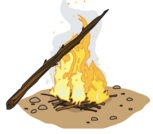
The Honeeshgish, or fire poker, is sacred to traditional Navajo. They believe that the Holy People blessed it and gave it to the Diné to use in their fireplaces, their homes, and their ceremonies. This Navajo booklet is part of the Native American Indian Literacy Project storybook series for the six main Utah Tribal Nations. The project was led by Shirlee A. Silversmith, American Indian education specialist for the Utah State Office of Education. There are five stories per Tribe, with a total of 30 booklets, plus an ABC book. The set of Indian Tribal stories may be utilized by elementary classroom teachers to (1) develop an understanding and appreciation of Native American culture and societal contributions (2) provide a genre of text for the application of reading strategies, and (3) facilitate the mastery of various Utah Core Content Curriculum objectives. The Native American Indian Literacy Project was made possible by funds from the Utah State Office of Education (USOE). It is a joint effort of the USOE and San Juan School District Media Center.
The original set has 30 booklets, measuring 5.5” x 8.5” each, and illustrated by tribal members. The booklets were formatted to be printed and assembled. This version of the book has been updated to accommodate using a projector or smart board with pages appearing in order.

Just as the birds in this story held a council meeting to decide how to deal with Buzzard, Ute people, to this day, have council meetings to discuss problems and solutions for their people. At these meetings, everyone has the right to express his or her opinion and be heard and listened to. Although some Native American Indian stories can only be told during the winter time, this story can be told any time of the year. This Ute (Uintah/Ouray) booklet is part of the Native American Indian Literacy Project storybook series for the six main Utah Tribal Nations. The project was led by Shirlee A. Silversmith, American Indian education specialist for the Utah State Office of Education. There are five stories per Tribe, with a total of 30 booklets, plus an ABC book. The set of Indian Tribal stories may be utilized by elementary classroom teachers to (1) develop an understanding and appreciation of Native American culture and societal contributions (2) provide a genre of text for the application of reading strategies, and (3) facilitate the mastery of various Utah Core Content Curriculum objectives. The Native American Indian Literacy Project was made possible by funds from the Utah State Office of Education (USOE). It is a joint effort of the USOE and San Juan School District Media Center.
The original set has 30 booklets, measuring 5.5” x 8.5” each, and illustrated by tribal members. The booklets were formatted to be printed and assembled. This version of the book has been updated to accommodate using a projector or smart board with pages appearing in order.
This 3-day activity reinforces what students have learned about animals. The activities focus on farm animals: cows, pigs, hens and ducks.
The use of multicultural versions of the story Cinderella helps students make comparisons and observations.

Students identify, explore and apply the elements of circle plot structures to their own stories by using graphic organizers, reading and writing stories, and using checklists to assess their work.

What do cowboy hats have to do with fairy tales? Two traditional fairy tales and their Texas-based counterparts set the stage for five different ways to respond to text.

Dragons Love TacosNarrative/Story Grammar Lesson Plan Could be added to any Narrative Retell Unit
Students will begin to understand the concept of maps by describing the path that Little Red Riding Hood took on the way to Grandma's house.
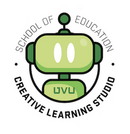
This is a list of potential ideas based off a specific technology. None of these ideas are fully developed lessons. Please make changes and adaptations as necessary for the students in your class.
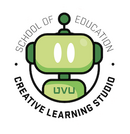
This is a potential lesson plan derived from a summer camp activity. It was based off a specific technology. Please make changes and adaptations as necessary for the students in your class.

This lesson is designed for Kindergarten students. Students will create a digital story using props and recording devices to retell a familiar story. Technology aspects of this lesson can be adjusted up or down depending on student ability. This lesson addresses the Kindergarten ELA Reading: Literature Standard 2 and 3. Title Image: Photo by Nong Vang on Unsplash
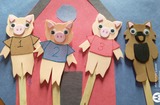
This is a fun lesson plan is meant to help students master the ability to retell a story with a beginning middle and end, and identify important characters and settings in the story. It will also help students learn the very basics of film making including story boarding, creating props and scenery, the importance or lighting and camera placement, copyright, and audio.

This is a lesson plan created to help students learn how to retell the events of a story using first, next, then, and last using the story The Tiny Seed by Eric Carle. Students are also learning the life cycle of a seed.
Students will learn about retelling and performing stories from other cultures.